Art in Limbo. Like lost packages at the post office without a return address. Metaphorically, on the bottom of the ocean in Davy Jones locker. Painters without a name, art without a number. Every generation of art has its casualties whose work lies outside that prescribed by the official tastemakers. These artists are sent artistically to marinate in exile, like Solzenitsyn sentenced to the Gulag. They were consigned to oblivion in the face of the tidal wave, the tsunami of abstract expressionism and psychologic and therapeutic ”action painting”; all dressed in the Stars and Stripes of New American painting while other artists were relegated to wearing a crown of thorns.
Who were these condemned to play the role of Judas Iscariot of the art world? The untouchable lepers to be avoided and who seized to exist by not conforming to the norm. In the art scene in America from the 1950’s to late 1960’s, there was a single universally accepted way of painting which acted as a funnel which syphoned all aspirants to pass through to enjoy fame in North America and from which no artist of consequence departed very far. Abstract Expressionism dominated most space in national exhibitions and American representations in international exhibitions as well as soaking up most of the photographs and text space in art magazines and books.
The abstract movement was shepherded and lucidified by a herd of lemming inclined writers and sundry scribblers, who used an ivy league education and erudition to explain why abstract expressionism was the summit and pinnacle of art and simultaneously persuade the public that almost all painting of the past, from scrawling on caves onward, was only a precursor to today’s ruling style and ultimate point of climax of visual art ecstasy. The hype attracted collectors, which in turn, created market values. Effectively, it was a new variant on the cult of precious-object-in-a-gilded-frame syndrome that would justify, condone and reaffirm man’s drive toward accumulated wealth.
A note common to all the various manifestations of this official art was violent disorder. Whether of spilled paint or that of junked automobiles. In Robert Heilbroner’s book, ”The Worldly Philosophers”, the economist noted the nature of boom and bust cycles and bubbles that have arisen since man began trading for material prosperity. Abstract expressionism had a similar path as the ”tulip boom” in Holland:
”In 1630s Holland, prices for tulip bulbs soared in a way that would have done early Yahoo investors proud. A bulb of an exceptionally prized and rare variety could sell for as much as a house on the best canal in Amsterdam. At the height of the mania, during the plague winter of 1636-37, traders huddled in taverns and frantically bought and sold futures on third-rate bulbs for sums greater than what they could have hoped to earn in a decade at their previous job of shopkeeper or artisan or laborer.The speculative frenzy couldn’t go on forever, and it didn’t. On the first Tuesday of February 1637, prices stopped going up. Because participants in the tulip futures market were following what’s now known as the greater-fool theory of investing (that is, they paid such spectacularly high prices on the assumption that some other nitwit would come along willing to pay even more), the market almost immediately collapsed.” ( Fortune Magazine )
And in dictating taste, the opinion makers of the time established an art academy as narrow and as rigid as any that ever held sway. As authoritarian as the Spanish inquisition or as repressively conservative as the Royal Academy in 19th Century England. The rule remained: if you can tell what it is, it isn’t any good, should not be exhibited, and should preferably not be reproduced or discussed. In an era where art was uniquely dependent upon publicity, this was the same as saying: if you can tell what it is, it doesn’t exist at all.
Still, many artists rebelled and were not raptured by the patterns paint made when it is flung, squirted, dripped, dropped, rolled, roiled, boiled or burned. These painters worked against the grain of official art in the land of liberty, battling institutions that either came into existence or took on their characteristics at the time, against the enforcing of rules in art.
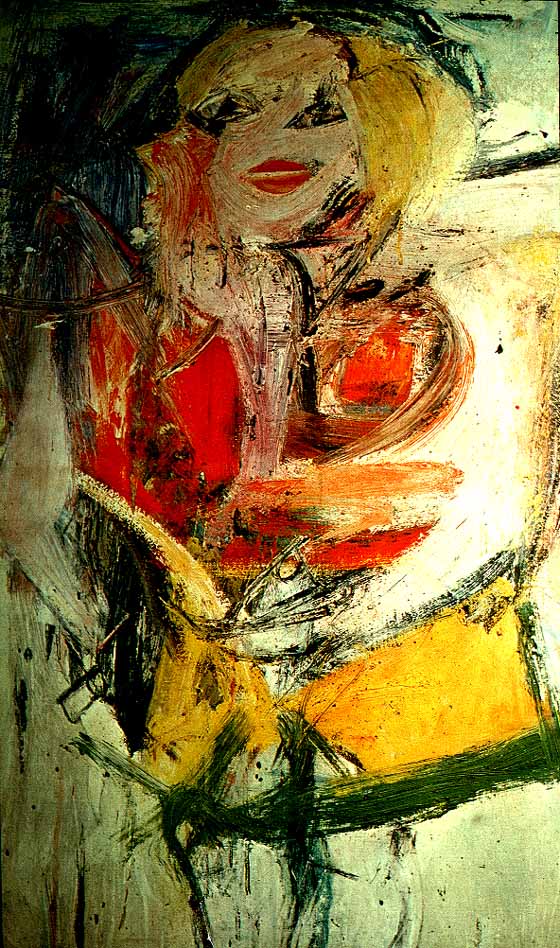
Willem de Kooning, Marilyn Monroe, 1954, though a faithful abstact impressionist a portrait of sorts was lurking in the brushwork of this painting. The broad caricature strokes of the portrait enabled partisans of the ''official art'' to imagine that Monroe had emerged by accident from the normal frenzy of De Kooning's paint.
They included older artists who never caught the trick, the swing, of haphazardly or intensively flinging their emotions onto canvas or younger painters who quickly bored at the pretension that surrounded the act. Collectively, they were unable or unwilling to master the self indulgences of abstract impressionism; a release to ”let yourself go” into the primal scream of visual art. The common trait of these invisible artists was their guilt in that none of their paintings bore the faintest resemblance to anything but paint, simple ordinary pain
istributed on a surface in such a way that the process of distribution remained evident.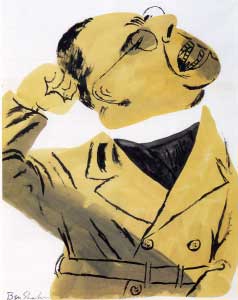
Shahn, Father Coughlin, 1939.Shahn’s painting shows Coughlin as a fanatical speaker, fist raised and head twisted into a pose not unlike Adolf Hitler’s.
And who is among this gallery of rogues waiting to be fingerprinted , photographed and pertinent digressions documented at an art police line up. The central offense was not believing that reality as a whole had ceased to exist, and their refusal to sacrifice and transfer this reality to 100% artist sensitivity, material and methods. They sought in their own way, to paint as well as they can in order to reveal what they see, each in his own way, of the human condition. Guilty as charged of being interested in making pictures relationg to the objective world around them.
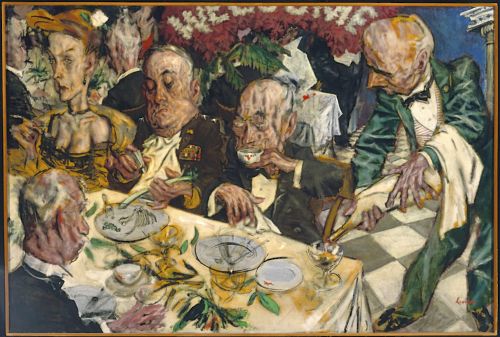
"Welcome Home," a satirical commentary about the privilege of rank, is the first painting Jack Levine created after serving 3 1/2 years in the Army during World War II. It's in the exhibition "Painting in the United States," 48 works from the 1940s, at the Westmoreland Museum of Art
Jack Levine ( 1915- ) grew up in the seamy precincts of South Boston, where he became at an early age, both moralist and traditionalist. A satirical scold, he has cast a cool eye on society, generally always with humor and biting satire.”In 1959 he was subpoenaed by the House Un-American Activities Committee. President Eisenhower called hisWelcome Home a lampoon. It was the hit of the Moscow Exhibition of American Art. His painting Cain and Abel hangs in the Vatican. The pope said his work will always be welcome.” Levine is one of the most outspoken of American artists, both on questions of public justice and on the need for remaining faithful to the tradition of art, even while bringing it up to date. His mildest term for the abstract expressionists was ”space cadets”. His most brilliant paintings have been punishing portraits of the cruel and the corrupt.”I am primarily concerned with the condition of man. The satirical direction I have chosen is an indication of my disappointment in man, which is the opposite way of saying that I have high expectations for the human race.” — Jack Levine
”An artist whom Levine alienated himself from was Jackson Pollock, who referred to him and Ben Shahn as “illustrators…when you try to emulate the old masters…you get corn, real corn. Bits of Renaissance pastiche.” –Rodman, Conversations with Artists. Levine on Jackson Pollock:I don’t think there’s such a thing for me as pure painting, if pure painting is all it’s about. It’s not enough. Otherwise we’d have housewives all over Long Island, dripping paint on the kitchen floors. To make an avant garde kitchen floor.” ( 2005 )
Ben Shahn( 1898-1969 ) came to prominence in the 1930s with “The Passion of Sacco and Vanzetti,” a politically pointed series about the Italian anarchists who many believed were framed for murder.Sahn was always communicative, both in and about his art. ”Compassion for suffering,” he once said, ”has been the constant intention of my work since I first picked up a paintbrush”.In 1949, before non-representational abstract art gained its place of dominance, New York’s Museum of Modern Art held a conference where Ben Shahn and abstract artist Robert Motherwell argued their positions. In explaining why he considered realism the best way for an artist to reach an audience, Shahn said the following:
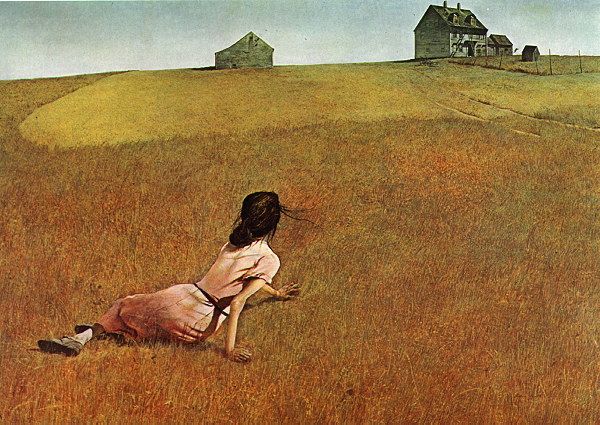
Andrew Wyeth, Christina's World, 1948.The painting shows a woman named Christina Olson, who had an undiagnosed muscular deterioration that paralyzed her lower body, dragging herself across the ground to pick flowers from her garden.If rhetoric is not stylistic ornamentation but persuasive discourse, then rhetorical forms are deeply and unavoidably involved in the interpretation of realities by visual media.
“I think any artist, abstract or humanistic, will agree that art is the creation of human values. It may have cosmic extension. It may reflect cosmic abstraction. But however earnestly it reaches out into the never-never land of time-space, it will still always be an evaluation through the eyes of man. It may deny but can never cast off its human origin. Trying to get away from content seems to me a little wistful—somewhat like Icarus trying to shed the earth. And at our particular point in history, it’s more than wistful; it appears almost to consort with those forces which would repudiate man and his culture as ultimate values.”


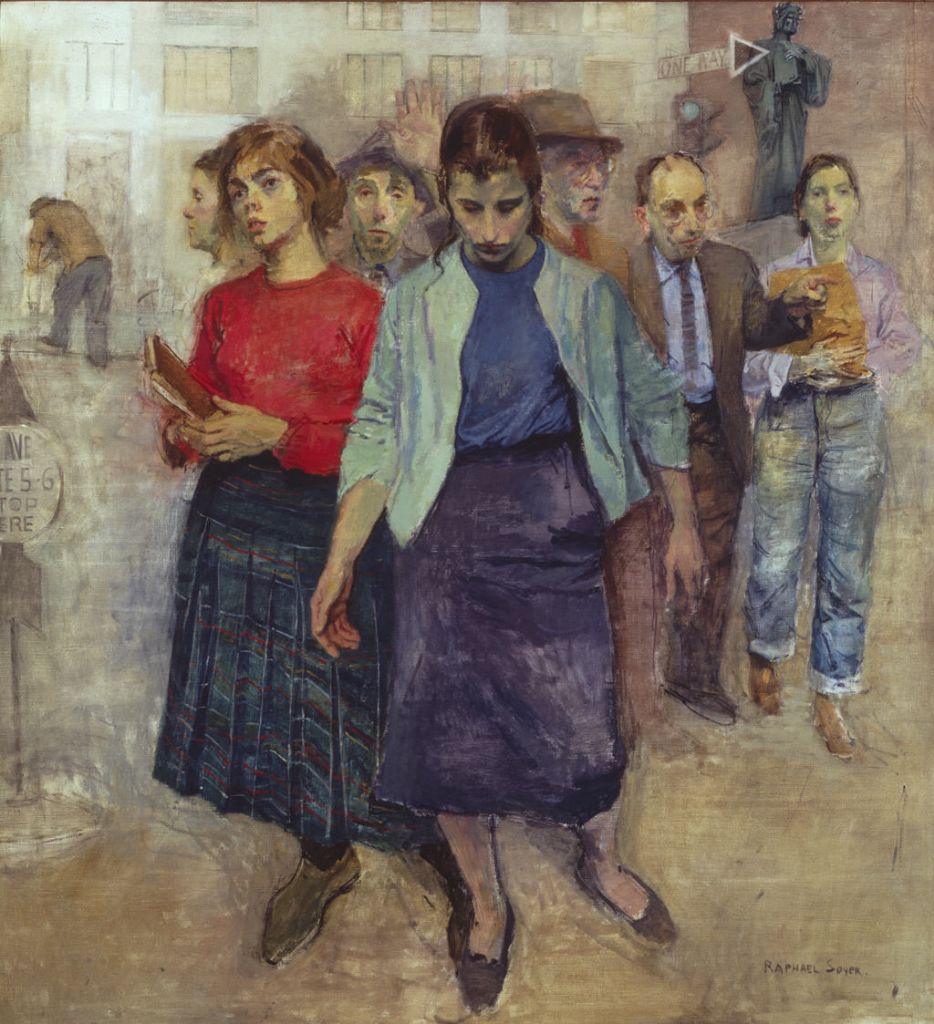

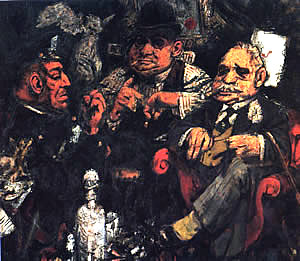
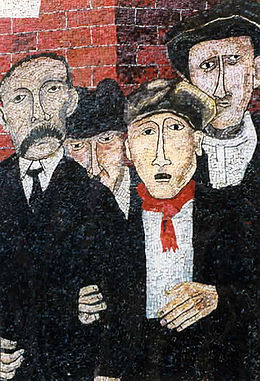



 COMMENTS
COMMENTS